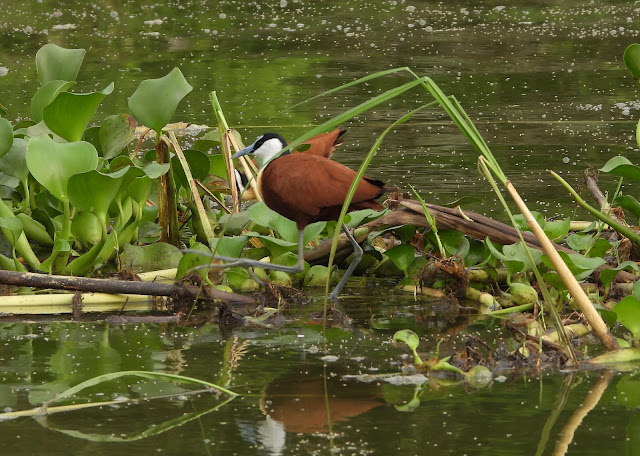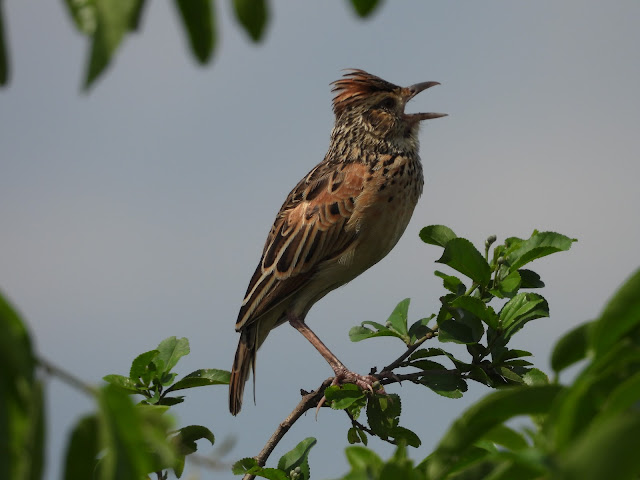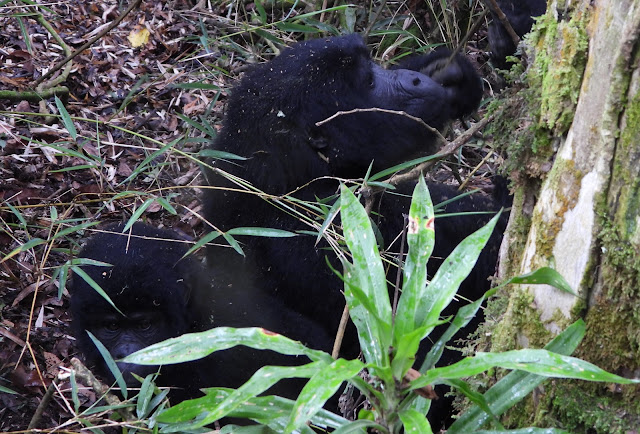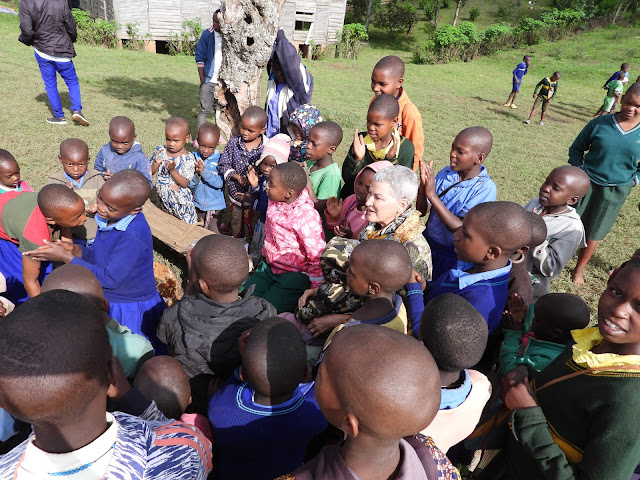The Gorilla above does indeed look forlorn, however, we were pretty excited about witnessing such impressive animals in the wild. We split into two groups to do our Gorilla trekking today and while everyone was happy with their experiences it is fair to say that one group had it better in terms of quality of gorilla viewing.
The day started with welcome songs.
The Bwindi Impenetrable Forest is a large primeval forest
located in south-western Uganda in the Kanungu District. The Bwindi forest is
on the edge of the Albertine Rift, the western branch of the East African Rift,
at elevations ranging from 1,160 to 2,607 metres (3,806 to 8,553 ft). The
forest contains around 160 species of trees and over 100 species of ferns.
The name Bwindi is derived from the Runyakitara word
Mubwindi and means "a place full of darkness". This name comes from
the extensive stands of bamboo interspersed amongst the larger forest
hardwoods. The bamboo and thick ground cover of ferns, vines, and other plant
growth severely hinder direct access on foot. Also known as the "Place of
Darkness", the forest is on the edge of the western arm of the Great Rift
Valley, only a few kilometers from the Democratic Republic of the Congo (DRC)
border and about 25 kilometres (16 mi) north of the Virunga Mountains.
The forest is one of the most biologically diverse areas on
Earth. Half of the world's population of the highly endangered mountain
gorillas live within its borders. The forest has been recognized by the United
Nations Educational, Scientific and Cultural Organization as a World Heritage
Site for its biological significance.
At present the forest is believed to contain 120 mammals
species, 348 bird species, 220 butterfly species and 27 frog species. Included
among the mammals are forest elephants and yellow-backed duikers. While
mountain gorillas are the most notable of the forest's primates, other
residents include chimpanzees, blue monkeys, l’Hoest’s monkeys, red-tailed
monkeys, vervet monkeys and black-and-white colobus monkeys. The forest's birds
include great blue turacos, black-billed turacos, black bee-eaters, African
green broadbills, handsome francolins, African black ducks and Cassin’s grey
flycatchers.
The forest is the traditional home of the Batwa people, a
marginalized community within Ugandan society.
In 1991, the Bwindi Impenetrable National Park was
established, adjacent to the Uganda, Rwanda and DRC border region. The park was
created to protect the forest's mountain gorilla population from poachers and
habitat destruction. Gorilla treks are led on a daily basis into different
sections of the forest so that trekkers can see the mountain gorillas and in so
doing generate necessary funds for the protection of these endangered primates.
The Batwa people lost their traditional hunting grounds through the establishment
of the park.
 |
| a shit photo, but we knew we were getting close... |






































































